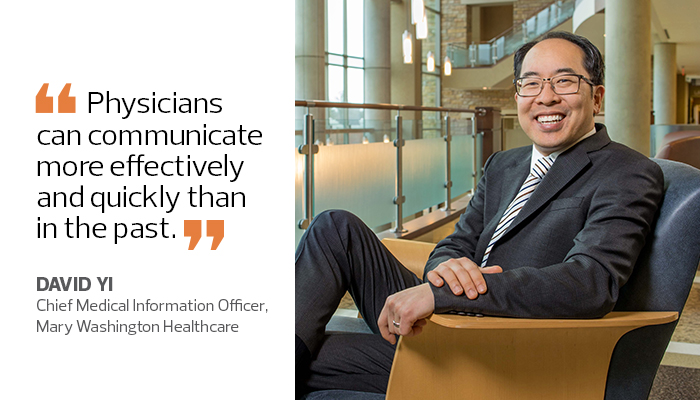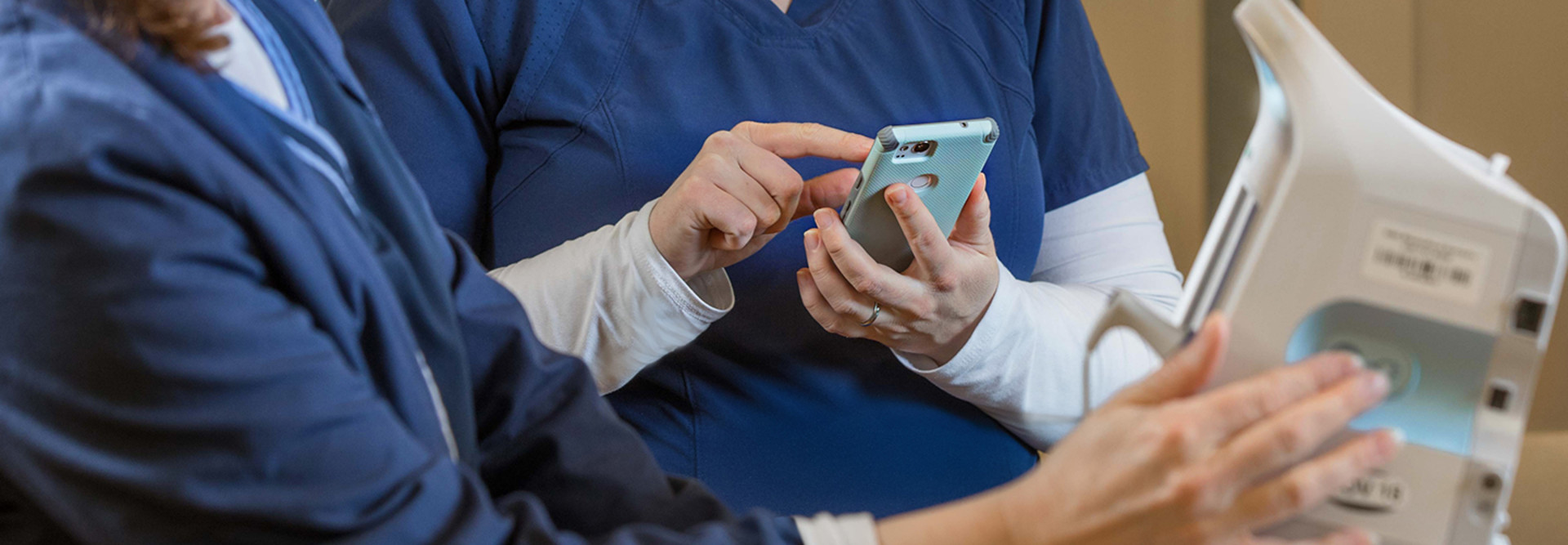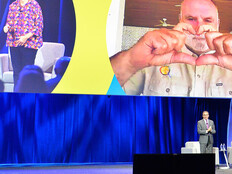Providers Evolve their Messaging Strategies to Boost Clinician Communication
Until recently, communication from clinician to clinician at Mary Washington Healthcare was a time-consuming, multistep process.
First, someone had to call a page operator, who then sent a message to the doctor’s alphanumeric pager. If the doctor was available, the call was returned. If the doctor failed to respond in a timely manner, repeated and escalated communication attempts were required. Using a unit clerk to make calls on someone’s behalf led to some temporary solutions, says David Yi, chief medical information officer for the Fredericksburg, Va., regional medical system. What’s more, he says, the full context of a pager message wasn’t always conveyed.
“Clinical staff can send a message to an alphanumeric pager, but it doesn’t always tell the doctor who is calling or what the problem is,” Yi says.
Additionally, such an arrangement can potentially delay consults and care, he says. “It’s not always possible for nurses to wait indefinitely for a call back. That can lead to calls going unanswered for a while and patients staying in the hospital longer than they should.”
To improve its setup, in 2017 Mary Washington transitioned more than 1,000 clinicians to TigerConnect, a secure text messaging platform designed specifically for healthcare professionals. The solution allows doctors and other staffers to send and receive secure messages that can be instantly read and replied to. It encrypts messages at the device level and sends them via a secure network, decrypting them only after they get to the recipient.
For Mary Washington and many other healthcare organizations, such messaging platforms are gaining wide interest as a means to streamline provider communications and improve the speed and quality of care delivery.
SIGN UP: Get more news from the HealthTech newsletter in your inbox every two weeks!
Secure Clinician Texting Offers Patient-Centric Benefits
Kennedy Health Alliance, which started using TigerConnect in 2013, rolled out the solution for a completely different reason: to stymie an increased volume of texting via the use of personal cellphones between clinicians.
Health professionals were texting each other, and texting patient information, using nonsecure SMS service, says Jim McCabe, chief medical information officer for the Voorhees, N.J.-based hospital system.
“We had to do something,” McCabe says.

Kennedy deployed the application first to physicians, making it mandatory to use the secure platform to exchange all patient information. The effort soon expanded, and today it encompasses more than 2,000 users, including staff in the nursing, radiology, pharmacy and physical therapy departments.
The rollout quickly eliminated rogue texts within the organization, but other patient-centric benefits were realized as well. For instance, during installation, Kennedy set up user groups and linked patient records to the messaging platform. The hospital’s analytics team used the platform, along with data, to create alerts.
Now, when a patient comes into the emergency room within 30 days of discharge, an alert goes out to all of the doctors associated with that patient, and a member of that care team is sent to the ER, McCabe says. Another alert lets providers know when superusers — patients who come to the ER several times per month — arrive at the facility. Teams are then deployed to educate these patients and help them with pain management to reduce their time in the ER and admissions.
“We saw a 20 percent decrease in readmission for heart patients,” McCabe says. “When you get a care team down to the ER and they know the patient already, they can get things done quickly, and that benefits the patient.”
Clinical Mobility Enables More Effective Interaction
Reimbursement in healthcare continues to move toward rewarding patient outcomes and lower readmissions over volume. With that in mind, the ability to share information on demand is of the utmost importance, says Jonathan Christensen, director of research analysis at KLAS Research.
“These secure messaging options give providers near-real-time responses to critical questions and allow clinicians to make changes in care quickly, versus in the past when such communication might take three or four hours,” Christensen says.
Looking ahead, he anticipates accelerated adoption of such solutions. “Secure messaging wasn’t even on the radar for most hospitals four years ago, and now we track 16 vendors in the space,” Christensen says. “As more functionality like barcode scanning and lab results makes it into the apps, you’re going to see a consolidation into a single device.”
Mary Washington uses its secure messaging platform for short, direct communication to and from clinicians. The deployment has changed the way patients in the hospital are cared for, Yi says, with physicians and departments creating their own small messaging groups.
Last month, users sent between 2,000 and 4,000 messages daily, he says. Some clinicians message 100 times a day.

“Physicians can communicate more effectively and quickly than in the past,” Yi says. “Surgeons are taking photos during procedures and sending them to referring physicians so they know immediately the outcome of an operation. Radiologists can provide instant reports and findings. All staff communication is much faster and more effective.”
Secure Communications Offer an End to Constant Upgrades
A secure communication platform has proved to be the panacea to NewYork-Presbyterian’s upgrading problem. At the same time, it’s also helped streamline and speed communications between the organization’s employees.
The health system spent 10 years investing in wireless and cellular systems using “six to eight communication applications, including an in-house paging system and Wi-Fi phones,” says Vice President and CTO Leo Bodden. The problem, he says, was upgrading devices and applications that were both hardware- and software-dependent.
“Every time we had an upgrade, we had to upgrade hardware and software,” Bodden says. “It made it fiscally impossible to maintain.”
NewYork-Presbyterian’s deployment of Mobile Heartbeat’s MH-CURE solution changed all that. There’s no need to upgrade hardware every time there’s a software upgrade (and vice versa), and the application lives on hospital-issued iPhones shared across departments. Today, 20,000 nurses, residents, physicians, social workers and transport employees use the app, texting each other 12 to 14 million times per year.
And there have been unexpected benefits too, such as less noise on the units, which improves patient satisfaction and health, Bodden says. “There’s a quieting of the units when you don’t need to be constantly broadcasting over the loudspeakers.”









